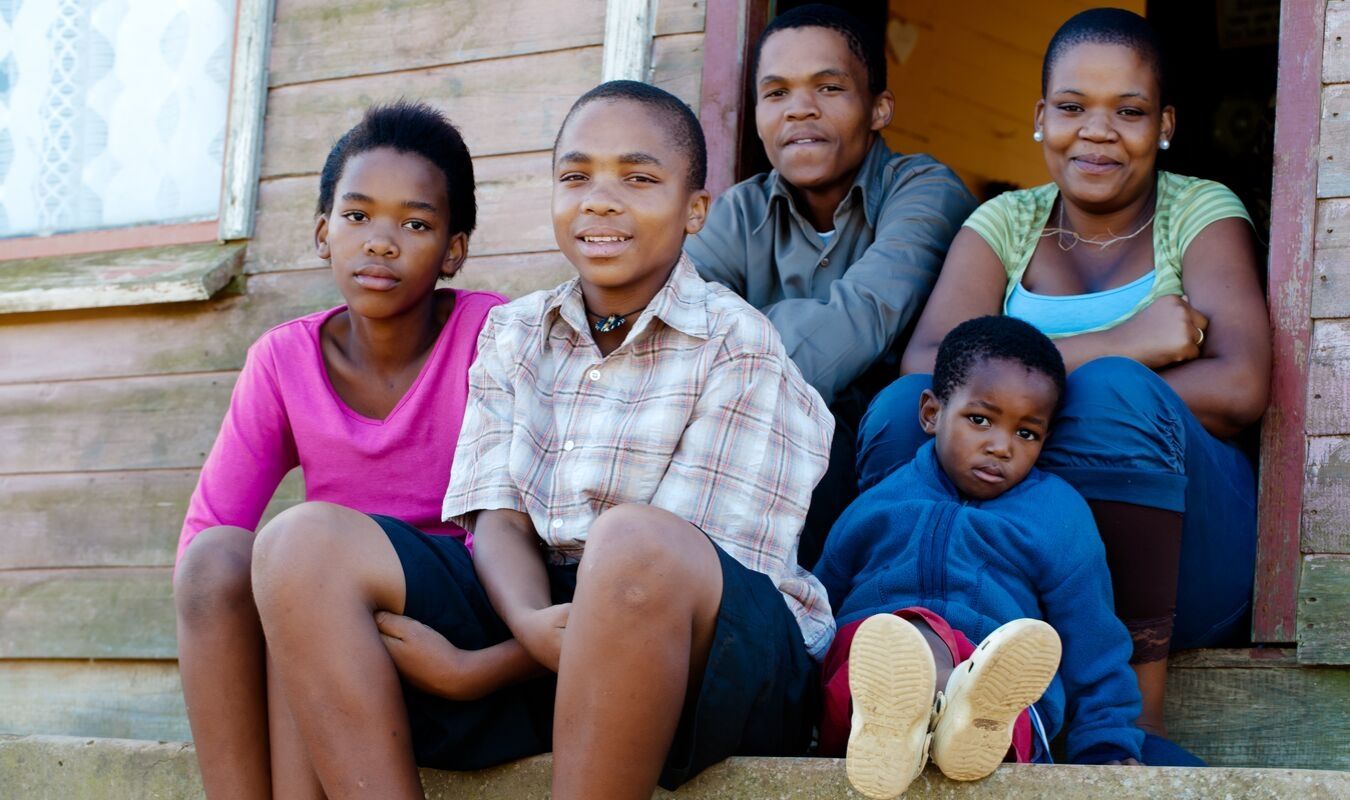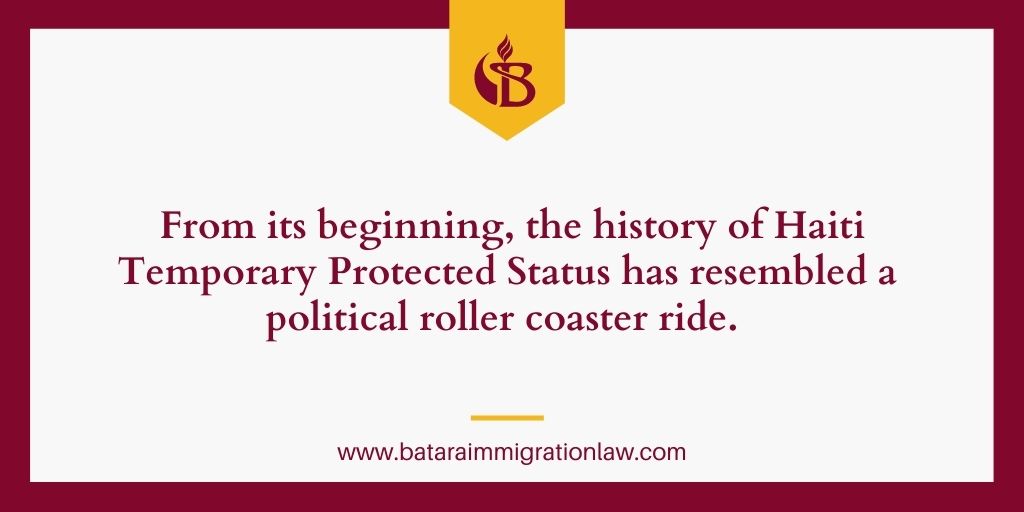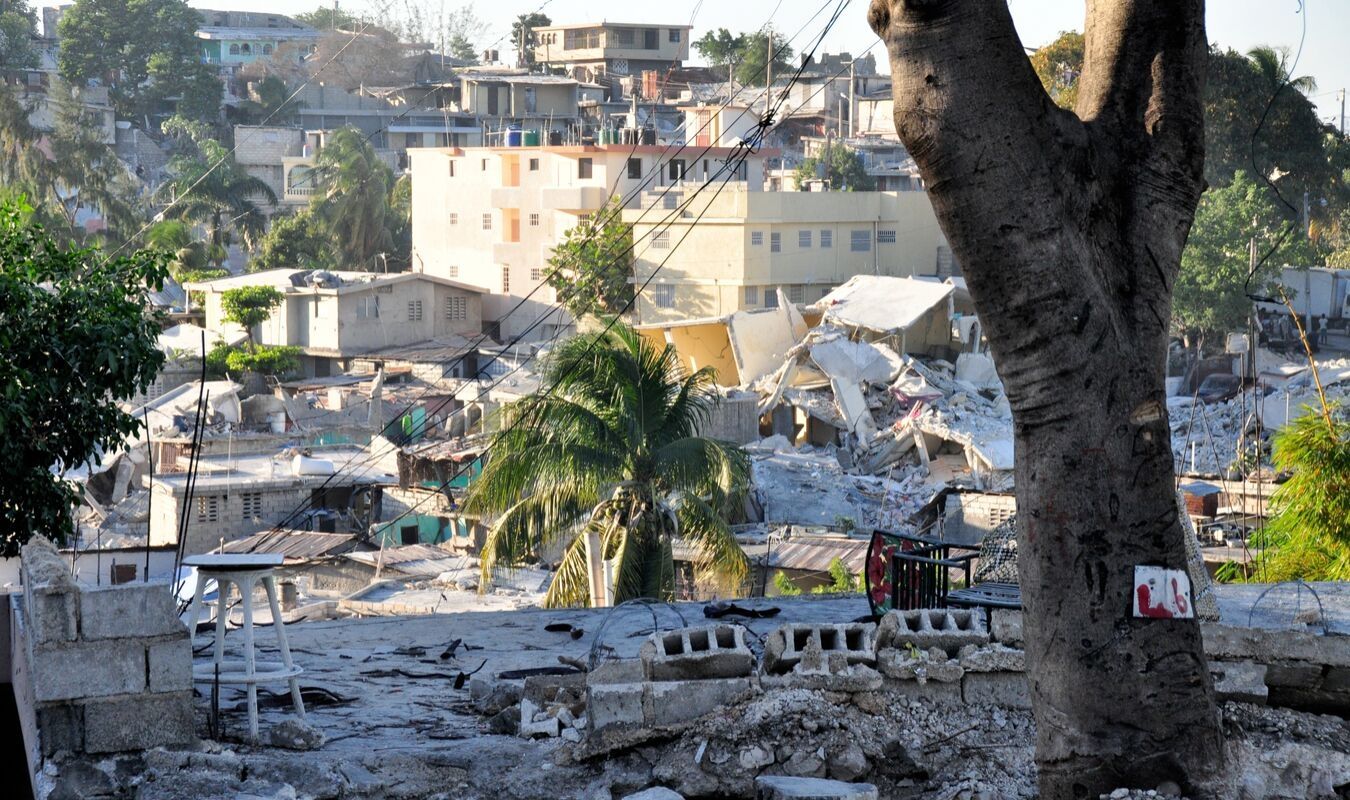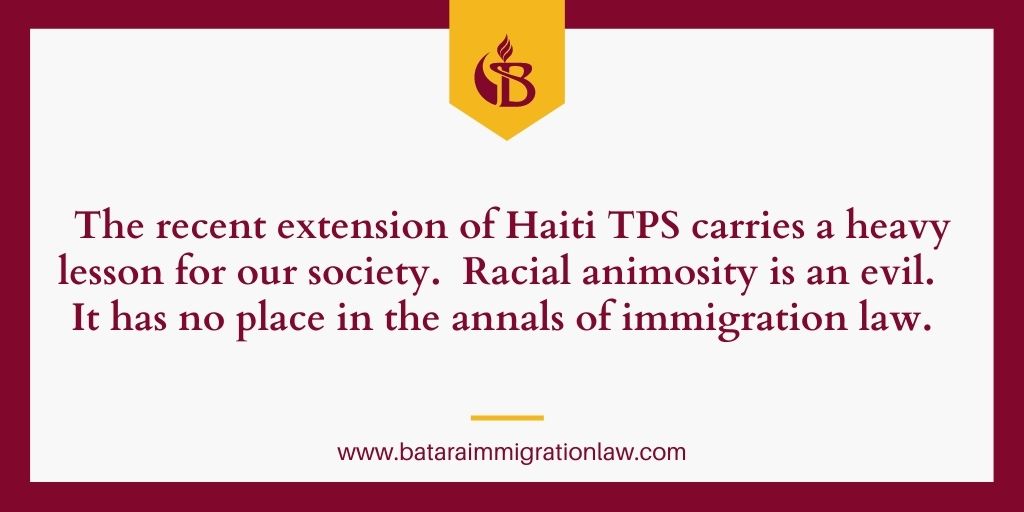
On Dec. 5, 2022, Secretary of Homeland Security Alejandro N. Mayorkas announced the extension of Haiti for TPS for 18 months, from Feb. 4, 2023, through Aug. 3, 2024. This will enable Haitians who were had TPS status earlier to continue living and working legally in the United States for the duration of the designated period.
By virtue of the re-designation, Haitian immigrants who have been continuously residing in the United States since November 6, 2022 will be allowed to apply for TPS benefits for the first time during the new registration period.
The program has been on its death bed since the Trump Administration announced its plan to terminate Haiti’s TPS status in January 2018. Various lawsuits managed to keep the alive, pending the outcome of those cases.
After an exhausting up-and-down legal battle, the extension provides Haitians with the chance to once again breathe a temporary sign of relief.
However, future extensions are not guaranteed.
In addition, in Sanchez v. Mayorkas, the Supreme Court ruled TPS recipients are not entitled to a direct path to permanent residency.
Despite these limitations, there are other possible roads to legalization for TPS beneficiaries.
And the Biden Administration may yet create a permanent residence option for TPS beneficiaries.
5 Things To Know About Haiti’s New Temporary Protected Status
- According to the DHS press release, the new TPS designation will enable Haitian nationals (and individuals without nationality who last resided in Haiti) currently residing in the United States as of November 6, 2022 to file initial applications for TPS, so long as they meet eligibility requirements.
- Those who attempt to travel to the United States after this announcement will not be eligible.
- Haitians who have been beneficiaries under earlier TPS designation periods will need to file new applications to ensure they do not lose, or experience a gap in, their lawful status.
- As before, individuals filing for TPS can also request Employment Authorization and travel authorization.
- All individuals applying for TPS undergo security and background checks as part of determining eligibility.
The Roller Coaster Ride Of Haiti TPS
From its beginning, the history of Haiti Temporary Protected Status has resembled a political roller coaster ride.
The stability which TPS was created to provide a community during a crisis has been deficient and unsteady throughout the program’s nine-year existence.
As a result, the 2017 announcement that the program would be terminated on July 22, 2019 did not surprise Haitian community leaders. Many believe Haiti TPS has been a disfavored programs since its inception.

Defending Haiti TPS Against Attacks
By The Trump Administration
According to the Trump Administration, conditions in Haiti had improved enough for Haitians to return home. Further TPS protection was no longer needed.
Immigration and community activists disputed the government’s contentions. Based on studies by various international organizations, they asserted that recovery is ongoing and sending Haitians back was not safe yet.
In their view, the TPS termination decision was simply another attempt to close America’s doors to immigrants from Haiti.
They were not alone.
To fight back, two lawsuits were filed on behalf of Haiti TPS beneficiaries. Both courts enjoined the termination of TPS for Haiti, pending a final decision on the merits of their claims.
This meant the TPS designation for Haiti remained in effect.
When and if Haiti TPS benefits would be shut off was unclear. Community activists and lawyers remained on high alert, due to the unresolved court cases.
Legal Battles To Keep The Haiti TPS Program Alive
Here is a short history of the two Haiti TPS lawsuits:
Saget v. Trump
On Monday, January 7, 2019, a federal lawsuit filed on behalf of Haitian Temporary Protected Status holders began in Brooklyn, New York. The decision is still pending.
The lawsuit, which was filed on March 15, 2018, alleges the Trump administration violated the Constitution when it ended the TPS protections for thousands of Haitian immigrants, and based its decision on racism and its political agenda more than actual evidence which were deleted to hide the facts about the real conditions in Haiti’s earthquake recovery.
Ramos v. Nielsen
On Oct. 3, 2018, the U.S. District Court for the Northern District of California, in Ramos v. Nielsen, enjoined the Department of Homeland Security from enforcing the decisions to terminate TPS for Sudan, Nicaragua, Haiti, and El Salvador.
The case was filed on March 12, 2018, a few days before the New York case.
On September 14, 2020, the Ninth Circuit Court of Appeals, which oversees California, issued an order that the administration’s plans to end the TPS program could move forward. Even though this decision allowed the government to terminate TPS for the other three countries, the lawsuit in the New York case prevented DHS from issuing a termination order pertaining to Haitians.
However, the Ninth Circuit decision is not the final word.
There are approximately 50,000 Haitian TPS beneficiaries and their families who would have been adversely affected by an unfavorable outcome in these cases.
Fortunately, the new Biden Administration announcement ends this fear . . . for now.
To understand the intensity of the Haitian community’s grievances, a brief glance at the history of Haiti TPS and the public engagement of Haitians in America today is instructive.
Early Haiti TPS History
TPS for Haitians began with a devastating January 2010 earthquake that left their home country in ruins. The immense damage led the United States government to designate Haiti for Temporary Protection Status for a period of 18 months.
The original registration period ran from January 21, 2010 to July 20, 2010. In July, the Haitian TPS registration period was extended for another six months. This was based on the government’s realization many Haitians had not yet applied.
In many cases, the failure to register was due to difficulty in trying to obtain official identification documents from their homeland as a result of the widespread destruction caused by the earthquake.
As expected, immigration opponents blasted the extended registration date. They asserted the new deadline would allow Haitians to sneak into the U.S. and claim TPS benefits.
Since only Haitians who were in the U.S. on January 12, 2010 were legally eligible to qualify for TPS, they claimed the extension would open the door to fraud.
Despite the distance and chaos in Haiti, opponents argued Haitians would have time and resources to enter the United States, pretending they were here all along.
The government dismissed these concerns as unfounded.
Rightly so. Fabricating evidence is not easy. The government has a series of checks and balances which must be passed before TPS benefits are granted.
Moreover, temporary protected status is a special immigration program, and the needs in Haiti clearly met the TPS program’s humanitarian purpose..
According to early government estimates, approximately 230,000 Haitians lost their lives as a result of the earthquake. Damages were calculated at $14 billion.
Shortly after the earthquake, Haiti suffered an outbreak of cholera. By the end of the year, the World Health Organization reported the outbreak had caused 2,500 deaths and infected close to 250,000 individuals.

Early Efforts To Deport Haitians
When immigrants are granted temporary protected status, they are given “deferred action” in cases where they are facing deportation or removal from the United States.
Thus, shortly after TPS for Haiti was announced, Haitian immigrants were released from detention centers across the country, and given temporary permission to live and work.
Nonetheless, in early January 2011, on the same day that the U.S. issued a travel warning advising citizens to avoid Haiti due to the cholera outbreak, immigration officials disclosed they were resuming deportations of Haitians.
That same day, 26 individuals were deported. Wildrick Guerrier, a Haitian immigrant who had been a lawful permanent resident for 17 years, was among them.
The removal policy timing was misplaced.
Upon his arrival in Haiti, Guerrier was incarcerated at a detention center. Although he had no pre-existing health problems, he became severely ill.
Nine days after his deportation, he died of cholera-like symptoms.
Although the DHS announcement said the focus was on those with criminal convictions, fear spread quickly that its scope was much wider.
Reports surfaced that Haitians with non-violent and minor crimes, closed family ties in the U.S., and serious medical conditions were among those deported.
Immigration officials acknowledged there were no procedures in place to determine which cases should be deprioritized or for detainees to seek judicial review of DHS deportation decisions.
For Haitian community leaders, these actions hinted at a deeper symptom: a hostile and negative prejudice towards immigrants from Haiti.
After the initial designation, Haitian temporary protected status was extended to January 22, 2013.
This was followed by extensions to July 22, 2014, then to January 22, 2016, to July 22, 2017.
In May 2017, the Department of Homeland Security announced a six-month extension for Haiti’s TPS. Officials stated there were indications if Haiti’s from the 2010 earthquake continued at pace, TPS extensions past January 2018 would no longer be warranted.
The extension was provided to give TPS recipients enough time to attain travel documents and make arrangements for their departure from the United States, as well as to allow the Haitian government sufficient notice to prepare for the repatriations.
The proposed closure announcement did nothing to lessen community concerns about the U.S. government’s jaundiced approach to helping Haitians, here and abroad, still in need of humanitarian assistance.
The Physical Devastation To Haiti
In fact, as recent as March 2014, DHS had provided updated and expanded information on the vastness of Haiti losses.
The Department of Homeland Security leader at that time, Jeh Johnson, explained:
“While the government of Haiti has made considerable progress in improving security and quality of life of its citizens following the January 2010 earthquake, Haiti continues to lack the adequate infrastructure, employment and educational opportunities, and basic services to absorb the approximately 58,000 Haitian nationals living in the United States under TPS.”
In particular, the DHS Federal Register noted:
- Haitian government officials now estimate the death toll caused by the earthquake between 230,000 to 316,000.
- 964 schools were damaged by the earthquake, affecting more than 200,000 children. Since then, many schools have been reconstructed, but a vast shortage still exists.
- Unemployment in Haiti was at 40% percent as of July 2013. More than 78% are living on less than $2 per day, and over 50% live on less than $1 per day..
- In rural areas, 88 percent of individuals now live below the poverty line and basic services are practically nonexistent.
- There have been 693,875 cumulative cholera cases and 8,482 deaths as of November 30, 2013. Meanwhile, resources for the cholera response, which includes, funding and staff, has been in steady decline since 2012.
- Following the January 2010 earthquake, approximately 1.5 million Haitians were left homeless and placed in temporary camps. As of September 2013, 172,000 individuals still live in temporary camps.
- The displacement led to increased risks for Haiti’s populace. Many displaced to camps and other marginalized areas have been subjected to a high risk of crime, gender-based violence, trafficking, sexual exploitation, and forced child labor.
- Kidnappings, death threats, murders, armed robberies, home break-ins, and carjacking continue to occur in large urban centers of Haiti. Over 16,000 households have been victims of forced evictions, several by police officers. A few months ago, the United Nations Security Council extended the UN peacekeeping mission in Haiti until mid-October 2014.
Acknowledging the enormity of Haiti’s rebuilding efforts, in November 2017, DHS revised its deadline and delayed the termination date for TPS to July 22, 2019.
The currently pending lawsuits were filed shortly afterwards.
Community Roots Of Haiti Temporary Protected Status Recipients
A report by The Center for Migration Studies illustrates the deep community, work, and family roots established by Haitian TPS beneficiaries. If the temporary protected status program is terminated, these ties will be severed.
Haiti TPS Demographic Profile
- 9% are married to a legal resident
- They have resided in the United States an average of 13 years
- 53% of TPS beneificiaries are male, 47% are female
- 81% are employed
- 6,200 have mortgages
- 57% have health insurance
Haiti TPS Residency Profile
The states with the largest TPS populations from Honduras are:
- Florida (32,500)
- New York (5,200)
- New Jersey (3,400)
- Massachusetts (2,700)
- Pennsylvania (1,400)
- Connecticut (1,200)
- North Carolina (1,000)
Given such strong family and community roots, Haitian immigrants should be granted a path to legal residency even if TPS is eliminated.
A Flickering Light Of Hope: Roads To Permanent Residence For Haiti TPS
The policy behind Temporary Protected Status, created in 1990, is to provide immigrants with a temporary safe harbor while they are not capable of returning safely to their home country due to armed conflict, an environmental disaster, and other extraordinarly severe conditions.
As a green card lawyer, I’ve seen how TPS helps immigrants rebuild their lives after their homes have been destroyed or families have perished as part of a national disaster.
However, in the view of the previous administration, helping your neighbor, even when your neighbor desperately needs your support, was not a worthy political ideal – not even for the leader of free nations across the globe.
But many Haitians living in the U.S. never gave up hope.
And for now, that faith has been rewarded with the recent DHS extension.
Although future extensions are not guaranteed and the Supreme Court has held that a grant of TPS is not the equivalent of a legal admission, Haitian TPS holders need to remain vigilant.
Over the course of the next 18 months, the Haitian community should continue to explore other options of acquiring permanent resident status, including a hoped-for plan under the developing Biden blueprint for immigration reform.
In my perspective, the recent extension of TPS for Haitians carries a heavy lesson for our society.
What’s the lesson?
Racial animosity is an evil. It has no place in the annals of immigration law.
Those of use who are defenders of immigrants have a moral, political, and legal duty to dismantle and defeat such sickness.

Victory over huge odds is possible.
It’s comforting to know such behaviors have been defeated for now.
More work. of course, must still be done.
Are you in?
By Carlos Batara, Immigration Law, Policy, And Politics




